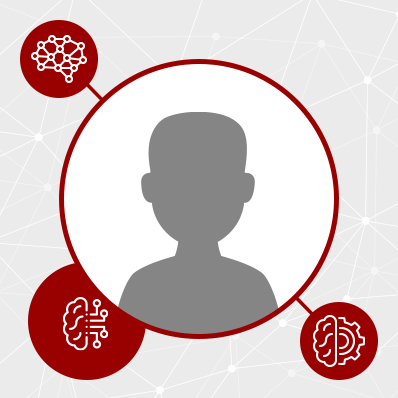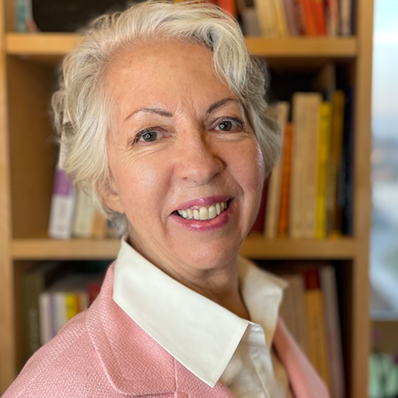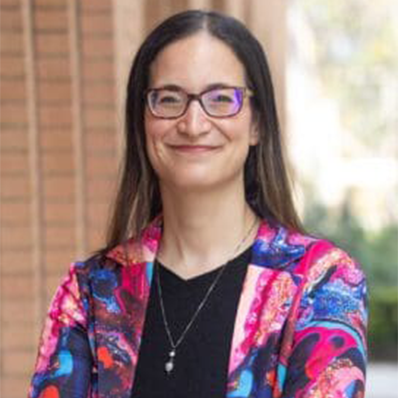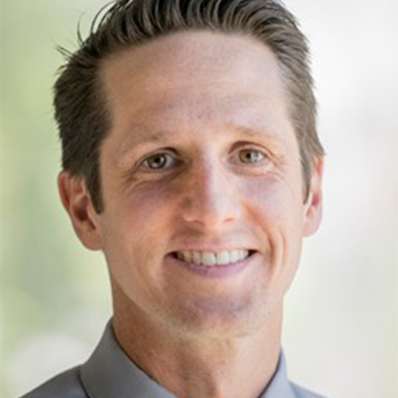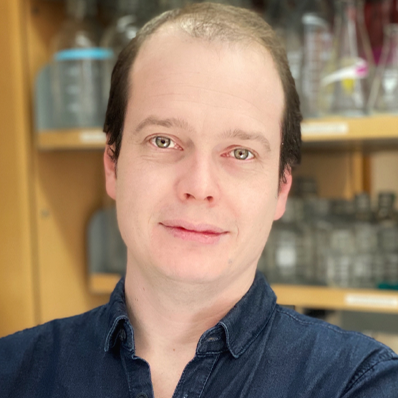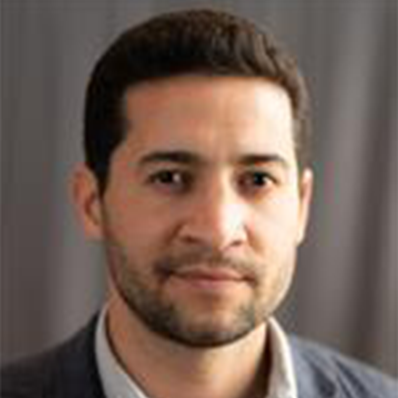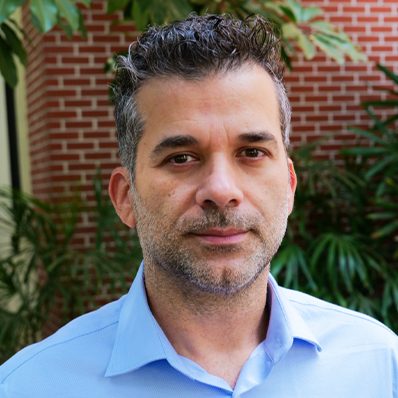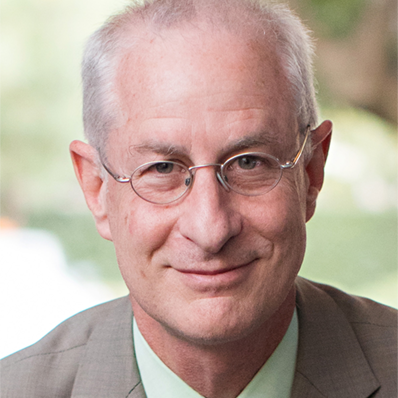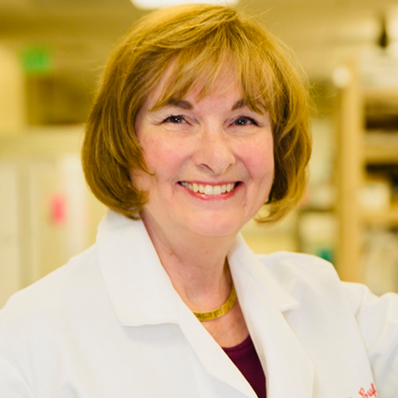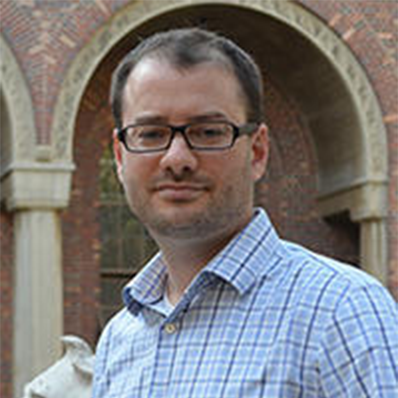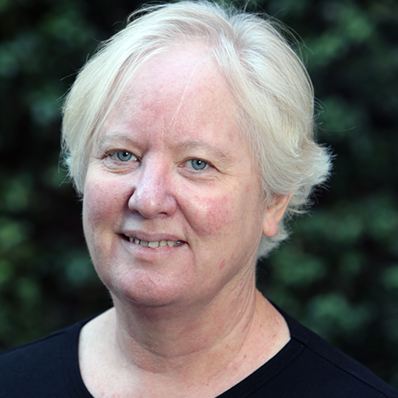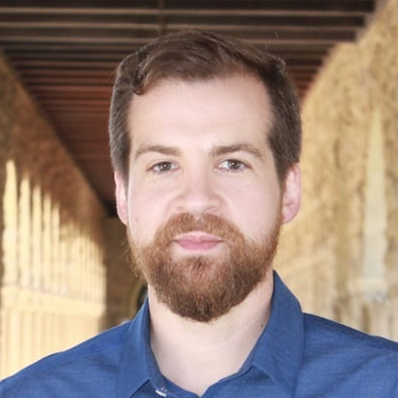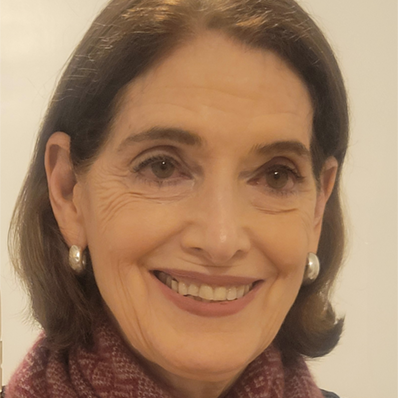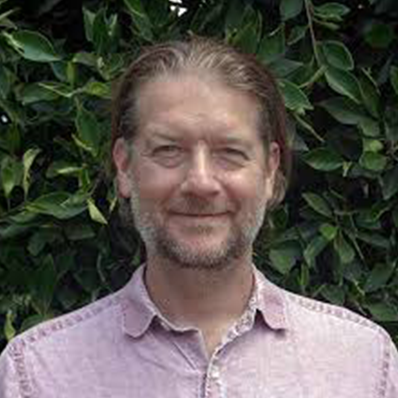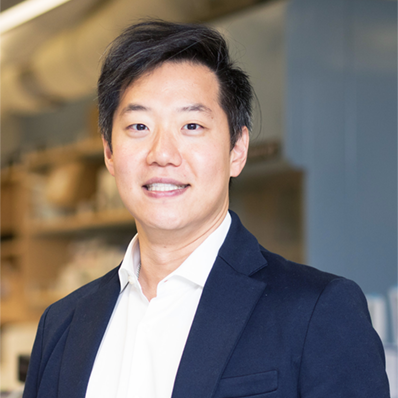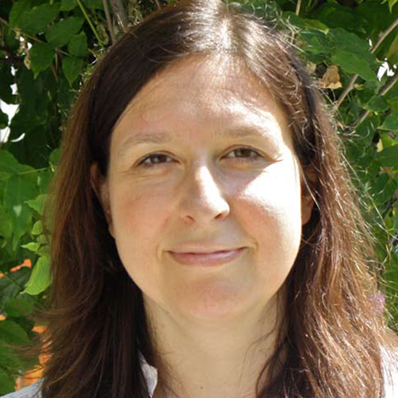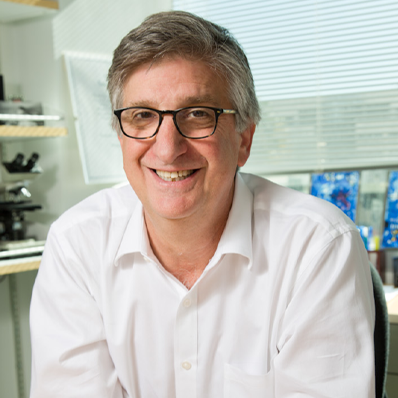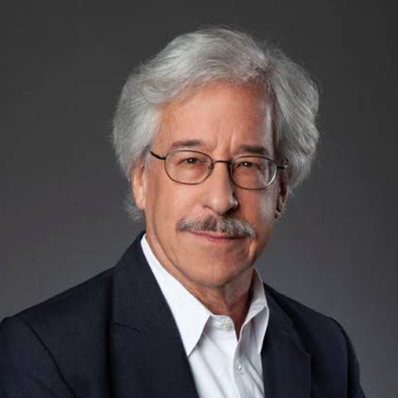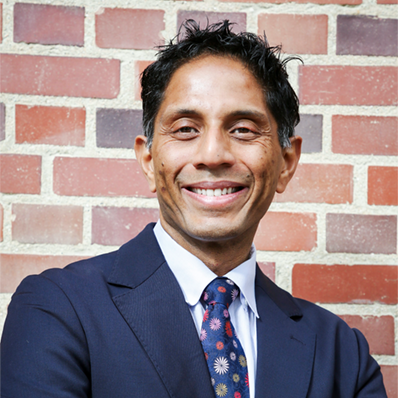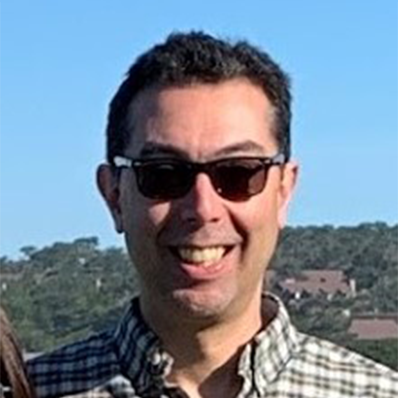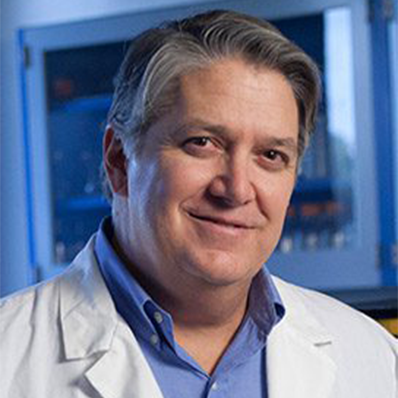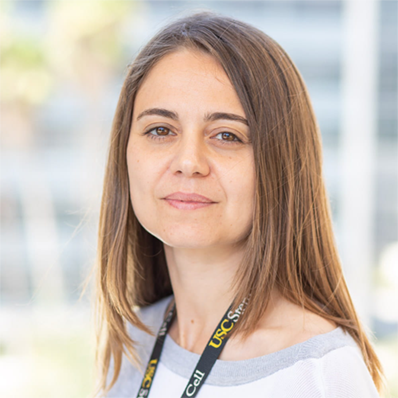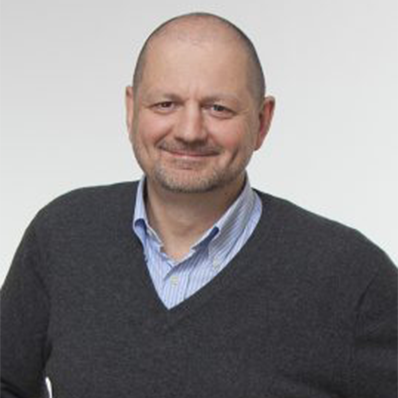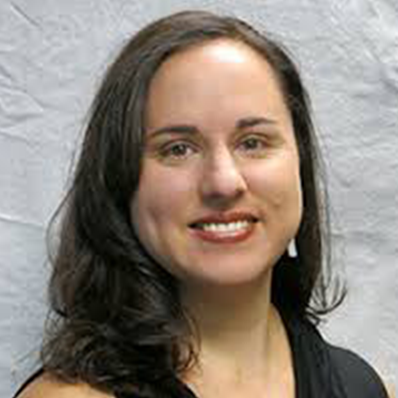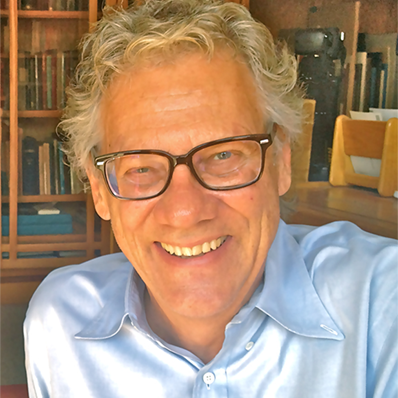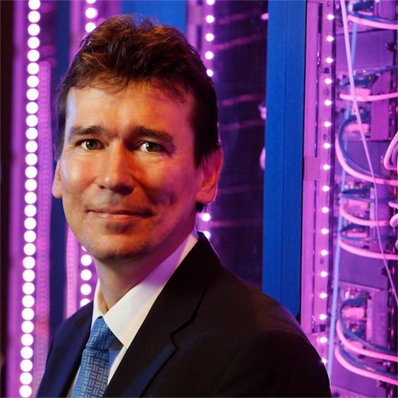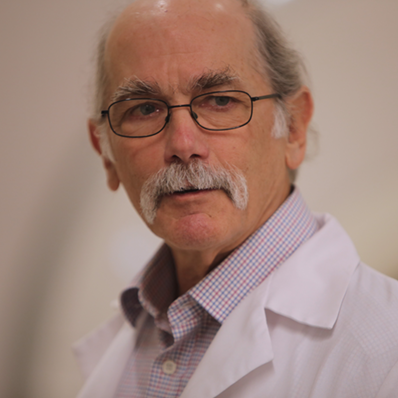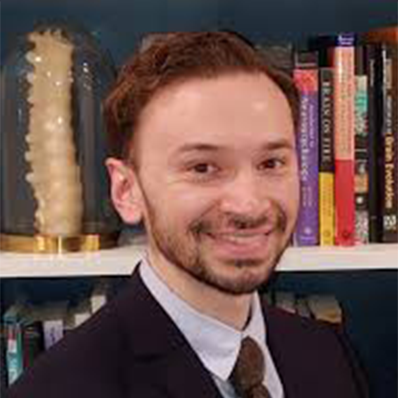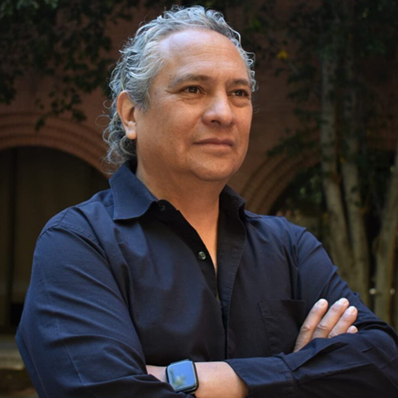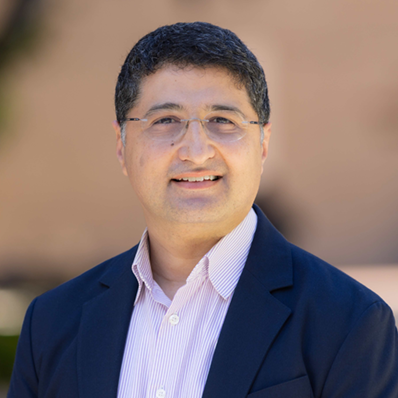A
Arnold, DonArnold, Don
Professor of Biological Sciences
Research Summary
The Arnold lab develops molecular tools for studying and manipulating neural circuits. We have developed novel recombinant probes known as FingRs, which label synaptic proteins such as PSD95, Gephyrin, and CamKii with high fidelity without causing off-target effects. We have used FingRs to visualize the formation of memories in larval zebrafish. These probes can also be used to ablate synapses, leading to functional disruption of neural circuits in a fast, efficient, and reversible manner. More recently, we developed ATLAS, a protein that mediates anterograde tracing of neural circuits from genetically determined neurons. We believe that ATLAS and its variants for tracing neuromodulatory circuits will be powerful tools for observing and manipulating neural circuits in the context of living organisms.
Aziz-Zadeh, Lisa
Associate Professor of Occupational Science, Psychology and Neurology
Research Summary
The Center for the Neuroscience of Embodied CognitionWe explore how rudimentary sensory-motor areas may be intrinsically involved in processing aspects of higher cognition such as language, thought, emotions, empathy, and social communication. We study both typical populations and autism, using MRI and behavioral studies, also integrating microbiome research.
B
Baker, Laura A.Baker, Laura A.
Research Summary
Gene-environment interplay in human behavior, including personality, cognitive and social development. Rich datasets from longitudinal twin study of risk factors for externalizing behavior problems available for analysis.
Barakat, Rita
Assistant Professor (Teaching) of Biological Sciences
Research Summary
My current research focuses on exploring the link between executive functioning and language, testing the “Bilingual Advantage” hypothesis using a computer-based version of the Stroop Task. My primary role within NGP and at USC is to teach undergraduate and graduate courses in neuroscience, cell biology and physiology, as well as provide curricular supportand advise graduate students. I am also the chair of the NGP Diversity Committee and participate in/ lead several DEI-focused initiatives at USC.
Benayoun, Berenice
Associate Professor of Gerontology, Biological Sciences and Cancer Biology
Research Summary
My lab has been excited to explore understudied influences (specifically biological sex and reproductive status) on gene regulation across key biological systems including the aging brain, with a special interest for innate immunity (e.g. neutrophils, macrophages, microglia), and how these inputs lastingly influence vertebrate health. Sex-dimorphic processes can have a major and lasting influence on somatic health, yet, this exciting question is still dramatically understudied, with few studies looking at the influence of biological sex as a focal point of interest, thus ignoring a major contributor to health disparities in human populations.
Bienkowski, Michael
Assistant Professor of Physiology and Neuroscience and Biomedical Engineering
Research Summary
Our lab investigates brain cell types, their susceptibility to disease, and how biomedical treatments can slow or prevent neurodegeneration. We have a wide variety of collaborative research projects using animal models of retinal diseases and Alzheimer’s disease (mice, rats, rabbits) as well as studies in post-mortem human samples. We use cutting-edge multidisciplinary approaches to characterize brain cell types and their neurodegeneration including viral tract tracing connectomics, spatial transcriptomics, 3D neuronal reconstruction, and digital pathology/machine learning.
Bonaguidi, Michael
Associate Professor of Stem Cell and Regenerative Medicine
Research Summary
Cognitive impairment (CI) is a burdensome neurological condition that occurs during aging, Alzheimer’s disease (AD), and is a common co-morbidity in many neurodegenerative diseases, including epilepsy. Unfortunately, CI prevalence continues to accelerate due to population aging and emerging therapies only slows CI by a few months. Our research seeks to develop regenerative medicine and provide longer-lasting benefits to CI through brain restoration. We are establishing endogenous brain regeneration as a therapeutic approach for CI in pre-clinical animals and people by (1) investigating neural stem cell behavior in aging, AD and epilepsy, (2) developing computational/AI drug discovery tools for precision medicine to treat CI, and (3) partnering with physicians for human research and clinical trials to translate our findings.
Borner, Tito
Assistant Professor of Biological Sciences
Research Summary
The whole of his research career focuses on deepening our understanding of how nerve cells control food intake under both normal physiological conditions and when conditions go awry, such as when disease sets in. His overarching research goal is to investigate and identify the components and pathways within the central nervous system that mediate anorexia (loss of appetite), nausea, vomiting (emesis), and weight loss in pre-clinical models. This exploration focuses on understanding how these symptoms manifests after various diseases and, importantly, how they can be prevented, which special emphasis on chronic conditions such as cancer and diabetes.
Borzage, Matthew
Research Summary
We focus on innovative imaging-based tools to understand the brain’s vascular, hemodynamic, and metabolic conditions across the lifespan. This physiology is essential to provide adequate nutrients and remove the metabolic byproducts of the brain. Without intact physiology, brain health suffers from early maturation throughout brain aging. Our studies investigate diseases and therapeutics that impair the ability of the brain to adequately supply itself with blood and metabolites, or that inhibit its ability to remove metabolic byproducts. We collaborate with studies and trials seeking interventions that could protect or restore this essential physiology.
Bottjer, Sarah
Professor of Biological Sciences and Psychology
Research Summary
Our lab studies how neural circuits that traverse the cortex and basal ganglia mediate motor skill learning during development. Skill learning entails the acquisition of a new behavior as trial and error of variable actions are refined into a stereotyped pattern. Acquisition of new motor skills depends on neural circuits that compare feedback of self-generated movements to a desired goal and reinforce “correct” movements that match that goal. We use multidisciplinary behavioral and systems neuroscience approaches to study the function of cortico-basal ganglia circuits during developmental skill learning. Understanding the normal function of these circuits is a necessary prerequisite to understanding the multiple diseases associated with disorders of the basal ganglia.
Braskie, Meredith
Assistant Professor of Neurology
Research Summary
We use neuroimaging, fluid biomarkers, environmental and genetic risk factors, and comorbidities to better understand Alzheimer’s disease (AD) risk – particularly the mechanisms underlying earliest brain characteristics that may signal or contribute to future cognitive decline. I am especially interested in the contributions of vascular, metabolic, and inflammatory risk to AD-relevant brain measures in older adults. I am also interested in disease heterogeneity and how it relates to health disparities and sex differences.
Brocas, Isabelle
Research Summary
I am a Professor at the University of Southern California and the co-director of the Los Angeles Behavioral Economics Laboratory (LABEL) and the Theoretical Research in Neuroeconomic Decision-making (TREND) Institute. My research revisits standard theories of decision-making and aims at better understanding how people make choices, what motivates them and what cognitive limitations prevent them from making rational choices.
C
Chang, Karen T.Chang, Karen T.
Associate Professor of Physiology and Neuroscience
Research Summary
Our lab is interested in understanding how neurons communicate with high fidelity to support complex brain functions. We aim to uncover the molecular and cellular mechanisms that enable precise synaptic signaling and to explore how disruptions in these processes contribute to neurodevelopmental and neurodegenerative disorders. Using Drosophila melanogaster as a genetically tractable model system, we integrate electrophysiology, molecular biology, confocal imaging, proteomics, and behavioral analysis to investigate synaptic function and plasticity.
Charaziak, Karolina
Assistant Professor of Otolaryngology-Head and Neck Surgery
Research Summary
Hearing loss is one of the most common sensory disabilities, with 350 million people worldwide suffering from hearing impairment. Unfortunately, the development of intervention strategies for overcoming the effects of sensory impairment is hampered by limited understanding of both how the normal inner ear processes environmentally relevant sounds and how disruptions in this processing can be identified and diagnosed. Thus, in our lab we aim to advance this knowledge by studying how the cochlea of the inner ear processes both simple and environmentally relevant sounds. We utilize approaches that combine both direct (e.g., intracochlear vibrometry) and indirect (e.g., otoacoustic emissions, electrophysiology) measurements of cochlear responses with theoretical modeling. Joint intracochlear and otoacoustic emission/electrophysiological studies informed by theoretical models are crucial for improving the power of diagnostics in humans, where the cochlea cannot be accessed for a direct study.
Chen, Jeannie
Professor of Physiology and Neuroscience
Research Summary
The major focus of my laboratory is to study sensory neuron signaling and mechanisms of retinal degeneration and neurodegeneration using cell culture and rodent models. Through interdisciplinary collaboration, we deciphered basic mechanisms of sensory neuron signal transduction and disease pathogenesis in retinal degeneration and neurodegeneration where protein mis-folding and aggregation is an underlying cause of disease.
Ching, Christopher
Assistant Professor Of Research Neurology
Research Summary
Dr. Ching’s research focuses on neuroimaging and genomic markers of psychiatric and neurodegenerative disorders. As a core organizing member of the Enhancing Neuro Imaging Genetics through Meta-Analysis (ENIGMA) Consortium, he designs and implements standardized processing and analysis techniques for large-scale neuroimaging studies. He leads the ENIGMA Bipolar Disorder Working Group, an effort pooling data and resources from around the world to improve our understanding of the biological processes driving bipolar disorder, and studies rare copy number variants like 22q11.2 Deletion Syndrome to understand how genetic mutations can lead to increased risk for developing psychiatric illness. He leads several large-scale transdiagnostic neuroimaging and genomic initiatives using machine learning to map common and distinct brain and clinical factors across mental illnesses.
Choupan, Jeiran
Assistant Professor Of Research Neurology
Research Summary
I have been working in the field of neuroimage processing and computational neuroscience since 2009. My focus is on employing advanced neuroimaging and machine learning techniques to improve structural and functional mapping of the brain to study neurodegenerative disorders. In particular, my main research focus is on mapping vascular and perivascular features of the brain across lifespan in health and in the presence of cognitive decline and dementia. Perivascular space is a major component of the brain clearance system and plays an important role in maintaining a healthy functioning brain, particularly in elderly and individuals at risk of neurodegenerative disease.
Christopoulos, Vasileios
Assistant Professor of Biomedical Engineering
Research Summary
Prof. Christopoulos’ research focuses on understanding the neural mechanisms underlying higher-order cognitive functions, such as decision-making, motor learning, and motor control. In recent years, he has expanded his research to include clinical studies on patients with brain and spinal cord injuries. His work encompasses intracortical Brain-Machine Interface research in individuals with tetraplegia and the use of functional ultrasound imaging in patients undergoing surgery for brain and spinal cord disorders. His innovative research aims to bridge the gap between basic neuroscience and clinical applications, contributing to advancements in neurotechnology and neurorehabilitation.
Coba, Marcelo
Research Summary
Neurodevelopmental neurodegenerative and psychiatric disease are complex brain disorders, and a multitude of genes have been described to contribute to their pathology with different penetrance. Human genetic studies have discovered many genes associated with disease susceptibility that are usually described as risk factors. For each of these disorders, synaptic proteins have been implicated, in particular those involved in synaptic plasticity and protein complexes associated to the post-synaptic density (PSD). Despite these discoveries, there has been a gap in understanding the underlying mechanisms that contribute to cellular dysfunction in these disorders. Our long-term goal is to determine how candidate risk factors are functionally integrated and how mutations affect their function, not individually, but in developmental signaling networks.
Cohen, Pinchas
Distinguished Professor of Gerontology, Medicine and Biological Sciences
Research Summary
The Cohen lab studies mitochondrial microproteins. We take a systems biology approach to mitochondria, looking at mitochondrial ORFomics, mito-genomics, mitochondrial-epigenetics, mito-transcriptomics and mitochondrial-proteomics. Our discovery pipeline involves novel bioinformatic approaches to clone and advance disease-relevant mitochondrial-derived peptides. We utilize MiWAS (mitochondrial GWAS), MDPseq (mitochondrial RNAseq) and related tools, to identify new microproteins involved in diseases of aging. Over the last two decades we described multiple novel genes including humanin and its cytoprotective and neuroprotective roles; MOTS-c, which is an exercise-mimetic peptide in which a loss-of-function mutation predisposes to diabetes, that has been advanced to clinical trials in humans; SHLP2, which is involved in neurodegenerative diseases; SHMOOSE, a neuroprotective microprotein that harbors a mutation that predisposes to Alzheimer’s disease, and multiple other previously unrecognized microproteins. Our goal is to continue to develop diagnostic tools and therapeutic targets for health aging
Coricelli, Giorgio
Professor of Economics and Psychology
Research Summary
We study human behaviors emerging from the interplay of cognitive and emotional systems. Our research agenda includes two main projects. The first one concerns the role of emotions in decision making, and the second is aimed at investigating the relational complexity in social interaction. Our objective is to apply robust methods and findings from behavioral decision theory to study the brain structures that contribute to forming judgments and decisions, both in an individual and a social context.
Cortes, Constanza
Assistant Professor of Gerontology
Research Summary
We investigate the mechanisms of exercise-associated neuroprotection in the context of aging and Alzheimer’s disease. We utilize transgenic exercice-mimetic transgenic mice in combination with running interventions to isolate and prioritize novel ‘exerkines’ to move into pre-clinical trials. We are also building an ‘exercise atlas’ of the brain across the lifespan, with the ultimate goal of developing exercise in a pill as a novel intervention for Alzheimer’s disease
Craft, Cheryl Mae
Research Summary
My well established vision research program encompasses my passion for discovery and deciphering rod and cone phototransduction mechanisms in health and disease using animal models for retinal degeneration. Throughout my academic career my research discoveries identified key genes in the pineal and retina, including arrestins to maintain normal high acuity vision. Currently, my personal goals include developing alternative therapeutic rescue treatment strategies with replacement gene therapy and in vitro stem cell technology. With Cobrinik and collaborators, we identified key developmental cone regulators controlling retinoblastoma genesis. I strongly believe in the importance of mentoring vision and clinician scientists and providing medical ethical training doctoral and medical students, and society.
D
Dewey, JamesDewey, James
Assistant Professor of Otolaryngology-Head and Neck Surgery
Research Summary
The Dewey Lab studies the mechanical processes that underlie normal hearing and how these processes are affected in hearing-impaired ears. Current topics of investigation include (1) how sound causes the structures within the cochlear spiral to vibrate, (2) how these vibrations are amplified by the sensory outer hair cells, and (3) how this amplification process leads to the emission of sound by the ear.
Dias, Brian George
Associate Professor of Developmental Neuroscience & Neurogenetics
Research Summary
Our research seeks to understand not only how mammalian neurobiology, physiology and reproductive biology is impacted by psychosocial and nutritional stress but also how parental legacies of such stressors influence offspring. To achieve this understanding, we employ a lifespan approach to study how stressors affect: sperm/egg/embryo (pre-conceptional stress), the gestating fetus (in utero stress), and the developing infant (post-natal stress). Our experimental approaches include assaying learning-memory-motivation, virus-mediated manipulation of neuronal activity and gene expression, (epi)genetic profiling of cells, in vivo fiber photometry and induced pluripotent stem cells (iPSCs).
Dickman, Dion
Associate Professor of Biological Sciences
Research Summary
Synaptic development, function, and plasticity in Drosophila.
E
Eagleson, KathieEagleson, Kathie
Associate Professor of Research Pediatrics and Neurology
Research Summary
Research projects investigate the development of brain architecture that controls social-emotional behavior and learning, and how early life experiences impact neurodevelopment. Genetic and environmental factors that regulate circuit and synapse formation are studied at the molecular and circuit level, using single cell and bulk RNA sequencing, viral circuit tracing, and multiplex in-situ hybridization. Preclinical mouse models use exposure to early adverse experiences to study age- and sex- specific mitochondrial adaptations that impact the emergence of cognitive, social and emotional behaviors across the lifespan.
Eich, Teal
Associate Professor of Gerontology
Research Summary
My research centers on understanding sex differences in the cognitive and neural mechanisms underlying learning and memory changes in healthy and pathological aging, with a particular focus on Alzheimer’s disease. My lab uses a combination of cognitive, biobehavioral (biomarkers, endocrine profiles), and neuroimaging (structural, spectroscopic, and functional) to understand memory and executive function in normal aging, and seeks to translate these empirical and theoretical findings to model cognitive disorders in psychopathologic and neurodegenerative diseases, where high level cognitive failures can be particularly deleterious both for the individual and society at large.
F
Finley, JamesFinley, James
Associate Professor of Biokinesiology and Physical Therapy
Research Summary
In the USC Locomotor Control Lab, we seek to understand how walking is controlled and adapted in both the healthy and injured neuromuscular systems. We develop models and experiments based on principles of neuroscience, biomechanics, engineering, and exercise physiology to identify the factors that guide locomotor learning and rehabilitation. Ultimately, the goal of our work is to design novel and effective interventions to improve walking ability in individuals with damage to the nervous system.
G
Gati, CorneliusGati, Cornelius
Assistant Professor of Biological Sciences
Research Summary
Structural biology, biophysics and pharmacology, with a focus on GPCRs and membrane transporters.
Gnedeva, Ksenia
Research Summary
Our perception of the environment relies on specialized cellular receptors residing in epithelial sensory organs. While olfactory and gustatory receptor cells are naturally reproduced throughout life in order to sustain the senses of smell and taste, age-related degeneration of retinal, auditory, and vestibular sensory organs is largely irreversible in humans. In the Gnedeva laboratory, we interrogate how molecular signaling and tissue mechanics control embryonic sensory organ growth and how the developmental programs of self-renewal and differentiation can be re-initiated in the mammalian inner ear after damage. Although the focus of our research is on hearing and balance restoration, our lab has broader interest in the common mechanisms that suppress regeneration in specialized sensory tissues.
Goldsworthy, Ray
Clinical Associate Professor of Otolaryngology and Biomedical Engineering
Research Summary
H
Hahn, JoelHahn, Joel
Associate Professor (Research) of Biological Sciences
Research Summary
The overall goal / objective of my research is to increase scientific understanding of the fundamental structure/function relations of the nervous system. Using a variety of research methods, I have investigated neural circuits relating to specific functions (for example, neuroendocrine control of reproduction, eating, and agonistic behaviors), as well as high-level global network organization of the brain. My current research is geared mostly to developing and investigating nervous system network models, and to building tools and resources for systems neuroscience, and more recently for comparing neuroanatomical ontologies within and between species, to simplify and enable more accurate interpretation and communication of neuroscience data.
Han, S.Duke
Professor of Psychology and Family Medicine
Research Summary
The Han Research Laboratory is dedicated to improving the health, wellbeing, and independence of adults living into old age. We are interested in investigating the diverse factors and neurobiological mechanisms that impact cognition and decision making across the lifespan using multidisciplinary approaches informed by the fields of neuropsychology, cognitive and systems neuroscience, epidemiology, genetics, and behavioral economics.
Hayes-Larson, Eleanor
Assistant Professor of Gerontology
Research Summary
Eleanor Hayes-Larson is an epidemiologist whose research program integrates social, psychiatric, and neuroepidemiology with advanced statistical methods to understand drivers of cognitive decline and dementia incidence and disparities. Her work takes a lifecourse perspective to examine psychosocial determinants of Alzheimer’s disease and related dementias in diverse populations, with an emphasis on groups historically underrepresented in research. A main line of her research seeks to evaluate the impact of traumatic stress across the lifecourse on cognitive decline, dementia, and neuroimaging biomarkers. In addition, she has a line of methodological research, including both statistical simulation studies and empirical data analysis, that focuses on improving statistical tools for causal inference and generalizability of findings in cognitive aging research.
Herring, Bruce
Associate Professor of Biological Sciences
Research Summary
The Herring lab integrates in vivo calcium imaging, machine learning-enhanced behavioral analysis, and ex vivo brain slice electrophysiology to understand the development of ASD/ID and psychiatric disorders in the brain.
Herting, Megan
Associate Professor of Population and Public Health Sciences
Research Summary
Our laboratory uses advanced MRI neuroimaging techniques to investigate how the brain develops during childhood and adolescence. Our research focuses on both internal and external risk factors, like hormones, air pollution, and physical activity on brain outcomes like structure, function, cognition, and mental health.
Hires, Samuel Andrew
Associate Professor of Biological Sciences
Research Summary
The Hires lab is investigating the basis of biological intelligence. Over the past decade we developed numerous imaging tools to record large-scale patterns of neural activity that are used by thousands of neuroscience labs. These have resulted in hundreds of publicly available datasets embedded with rich representations of neural activity. We are now developing analytical tools, using recent AI developments, to ultimately distill undiscovered principles of biological intelligence from these datasets.
Hirsch, Judith A.
Gabilan Distinguished Professorship in Science and Engineering and Professor of Biological Sciences
Research Summary
Our laboratory studies the thalamus, the interface between neocortex and the sensory periphery. Thalamus was once regarded as a simple gatekeeper, passively relaying information during waking and shielding neocortex from disturbance during sleep, but this is an impoverished view. We explore how thalamus, itself, contributes to sensory integration. In particular, we study the structure of neural circuits in the visual part of thalamus, how these operate during vision and how they extract and recode information from the eye. Our work shows how thalamus might contribute to visual processing by, for example, sharpening the visual image and increasing the efficiency of the neural code. Because circuits in different parts of thalamus are similar, our work pertains to thalamic function in general.
Holschneider, Daniel P.
Professor of Psychiatry & the Behavioral Sciences
Research Summary
Our laboratory focuses on brain imaging in awake, behaving rodents. We use classic methods like autoradiography and positron emission tomography, along with histologic approaches and 3D brain reconstruction. We have been amongst the first to adapt analytic methods that are part of the human functional neuroimaging toolbox (statistical parametric mapping, functional connectivity, network analysis) to autoradiographic and histologic whole brain data sets. This enables voxel-based exploration of cerebral function in models of dopaminergic deafferentation, Huntington’s Disease, brain injury, fear, stress, hyperalgesia, gut microflora alterations, and chemogenetic knockdown. Our expertise includes functional brain mapping, animal behavior, physiologic monitoring (EEG, EMG, EKG, cardiac output), and histochemistry.
Humayun, Mark
Professor of Ophthalmology, Stem Cell Biology and Regenerative Medicine and Biomedical Engineering
Research Summary
Retinal research to restore vision using bioelectronics and stem cells
I
Ichida, JustinIchida, Justin
Associate Professor of Stem Cell Biology and Regenerative Medicine
Research Summary
We are interested in understanding mechanisms underlying neurodegenerative and neurodevelopmental diseases. We also aim to develop new therapeutic strategies for these disorders.
Immordino-Yang, Mary Helen
Professor of Education, Psychology & Neuroscience
Research Summary
Professor Mary Helen Immordino-Yang is the Director of USC CANDLE (Center for Affective Neuroscience, Development, Learning and Education). CANDLE’s mission is to bring developmental affective neuroscience into partnership with educational innovation, and to use what is learned to guide the transformation of schools, policy, and the student and teacher experience for a healthier and more equitable society. Our research involves analyzing multi-modal data, including functional and structural neuroimaging (MRI, EEG), and psychophysiological data, from mixed-method studies of adolescent development and effective teaching. During the 2025-2026 academic year, CANDLE will be designing, developing stimuli and collecting data for an upcoming longitudinal study of adolescents’ brain and psychosocial development.
Irimia, Andrei
Research Summary
Andrei Irimia, PhD, is a biogerontologist and computational neurobiologist studying the effects of genetic, epigenetic, and environmental factors on brain aging. His laboratory uses interpretable deep learning, genomics, and brain imaging to identify and characterize novel risk factors for Alzheimer’s disease and related dementias (ADRD). He also studies accelerated aging, neurovascular calcification, and brain injury as risk factors for ADRD.
Itti, Laurent
Professor of Computer Science and Psychology
Research Summary
The main fundamental research focus of the lab is in using computational modeling to gain insight into biological brain function. Thus, we study biologically-plausible brain models, and we compare the predictions of model simulations to empirical measurements from living systems. The brain subsystem towards which most of our efforts are focused is the visual system. Our modeling efforts range from fairly detailed models of small neuronal circuits, such as a single hypercolumn of orientation-selective neurons in primary visual cortex, to large-scale models embodying several million highly-simplified neurons to explore mechanisms of visual attention, gaze control, object recognition, and goal-oriented scene understanding. Further, we strive to employ modeling principles which are mathematically optimal in some task- and goal-dependent sense. Thus, we are interested in investigating the tasks and conditions for which the biological brain approaches the theoretical limits of information processing.
J
Jahanshad, NedaJakowec, Michael
Professor of Clinical Pharmacy (Teaching)
Research Summary
The primary focus of research in Dr. Jakowec’s laboratory is to better understand the underlying molecular mechanisms involved in neuroplasticity in the injured brain with the emphasis on the basal ganglia and prefrontal cortex, regions of the brain responsible for motor and cognitive behaviors.The overarching goal is to find improved therapeutic approaches for brain disorders especially Parkinson’s disease and drug addiction. For the past 20 years the laboratory has examined the effects of exercise on promoting neuroplasticity, particularly synaptogenesis in animal models of Parkinson’s disease. In addition to non-pharmacological approaches to promote brain repair, ongoing studies are using an experimental therapeutics approach to explore pharmacological interventions to determine if novel drugs can serve as a means to enhance brain repair, especially in the context of exercise. Recent studies have focused on the mechanisms by which astrocytes support neuronal function as well as mechanisms by which boosting mitochondrial integrity can promote improved functional connectivity and restoration of motor and cognitive behaviors.
K
Kalluri, RadhaKalluri, Radha
Associate Professor of Otolaryngology
Research Summary
Physiology of the Inner Ear Laboratory focuses on understanding the physical and physiological mechanisms underlying sensory transduction in the inner ear, with the ultimate goal of understanding how disease and injury impair function. The lab. studies sensory transduction in the auditory and vestibular systems both at the cellular and system level using electrophysiology and biophysical modeling. Our work relies heavily on the interplay between quantitative analysis, theoretical modeling and experimental neuroscience.
Kamitakahara, Anna
Assistant Professor of Research
Research Summary
Research in the Kamitakahara Laboratory investigates how genes and the environment shape the development and mature function of the neural circuits controlling feeding behavior. Specific topics examined include: 1) the impact of perinatal nutrition on gut-brain signaling of satiation and reward-based feeding behaviors, and 2) the genetic and biological contributions to inter-individual differences in response to GLP-1 receptor agonist treatment. Mechanistic understanding of neural activity and feeding behavior is probed using advanced techniques such as bulk and single cell RNA sequencing, highly multiplexed in situ hybridization, and metabolic cage phenotyping. Through delineation of the genes and dietary factors that shape feeding behavior, research in the Kamitakahara lab aims to provide insight into the biological mechanisms underlying overconsumption and cardiometabolic disease.
Kanoski, Scott
Professor of Biological Sciences
Research Summary
The prevalence of obesity has exploded over the past 40 years. The biological systems that underlie the excessive eating behavior contributing to obesity onset remain poorly understood. Our research goal is to discover the neural systems and psychological processes that control energy balance, with a particular focus on understanding the neurobiological substrates that regulate obesity-promoting behaviors such as food impulsivity and environmental cue-induced feeding. Another primary focus of our lab is to study how the brain is negatively impacted by dietary and metabolic factors. Consumption of Western diets (high in saturated fatty acids and sugars) not only contributes to obesity development, but also produces deficits in learning and memory capabilities and can even increase the risk for developing dementia. We are currently examining the specific causal dietary factors, critical developmental periods, and neurobiological mechanisms underlying diet-induced cognitive decline. Ongoing research identifies the gut microbiome as a critical link between unhealthy junk food diets and neurocognition.
Kaplan, Jonas
Associate Professor of Psychology
Research Summary
I study self, consciousness, and meaning-making in all of its forms, with a focus on understanding the neural systems that integrate information to form high level models of the world and of the self. This includes a focus on narrative cognition, and naturalistic fMRI methods that allow for the analysis of the real-time, ongoing neural dynamics that support our understanding of the people, events, and stories that make up our worlds.
Kay, Steve A.
Research Summary
Our laboratory studies the construction and dynamics of complex genetic networks that underlie circadian rhythms in humans, animals and plants. We also develop and use cutting-edge technologies for measuring transcription in live cells, tissues and intact organisms. We use large scale datasets of gene expression or protein content combined with genetics, bioinformatics and computational tools (mathematical modeling), chemical screens and more conventional biochemical approaches. Ultimately our aim is to scale our understanding of the dynamics of circadian clocks from the systems level down to atomic resolution mechanism. We have a strong commitment to translation of our research, in the case of humans for novel cancer drug discovery. We are currently focussing on targeting clock proteins in glioblastoma stem cells, in order to develop novel therapeutics.
Kim, Hosung
Associate Research Professor of Neurology
Research Summary
Currently, we are particularly focused on the morphometry of the perivascular space and non-invasive measurement of Glymphatic flow (a water flow system in the brain that helps clear waste products and toxins) using MRI and artificial intelligence. This research enhances our understanding of the underlying mechanisms involved in sleep disorders, accelerated brain aging due to poor sleep and impaired Glymphatic function, and neurodegenerative diseases such as Alzheimer’s disease and other forms of dementia. Dr. Hosung Kim serves as the PI of NIDLL, and guides and coordinates the research efforts of the lab members. We welcome you to join the lab and participate in our valuable research.
Kutch, Jason
Associate Professor of Biokinesiology and Physical Therapy
Research Summary
Dr. Kutch investigates how brain dysfunction contributes to chronic pelvic pain and other chronic overlapping pain conditions (COPCs). His current research is focused on developing non-invasive brain stimulation and immersive virtual reality approaches for augmenting chronic pain treatment.
L
Lawrence, KatherineLawrence, Katherine
Assistant Professor Of Research Neurology
Research Summary
Our research is focused on improving understanding of the brain in neurodevelopmental conditions and in typical development. To this end, we analyze large-scale human neuroimaging data using advanced computational methods to study brain connectivity, brain function, and brain structure. The long-term goal of our research is to inform how we can best support the unique strengths and needs of every neurodivergent individual.
Leahy, Richard M.
Professor of Electrical and Computer Engineering, Biomedical Engineering, and Radiology
Research Summary
My lab is focused on development of computational methods and software for analysis of human brain images (the BrainSuite software) and brain electrophysiology (the BrainStorm software). Application areas include the cognitive and clinical neurosciences.
Lee, Changhan David
Associate Professor of Gerontology
Research Summary
The Lee Lab investigates how metabolism regulates aging and age-related diseases, including Alzheimer’s, with a focus on mitochondrial communication. Traditionally viewed as end-stage organelles, mitochondria are now recognized as active signaling hubs. We study newly discovered bioactive microproteins encoded in the mitochondrial genome—particularly within the 12S rRNA region—that act as innate signals influencing cell and organismal physiology. These microproteins function both within and between cells and may serve as mitochondrial longevity genes and therapeutic targets. Our work bridges molecular biology and whole-organism physiology to uncover how mitochondria influence aging from within. Students interested in metabolism, mitochondrial biology, and translational aging research will find rich opportunities here.
Lee, Darrin Jason
Research Summary
The focus of my laboratory is to explore the underlying mechanisms and potential of neuromodulation for cognitive dysfunction and psychiatric disorders, such as Alzheimer’s disease, Parkinson’s disease, epilepsy, depression, obsessive compulsive disorder and schizophrenia. Specifically, we utilize multiple depth electrode local field potential recordings and functional ultrasound imaging to evaluate simultaneous electrophysiology, cerebral blood flow and functional connectivity in these disorders. Using these tools, our goal is to better understand the underlying pathophysiology and optimize our neuromodulation strategies. Our aim is to translate our preclinical findings into clinically relevant neuromodulation treatments. My clinical research is focused on evaluating potential new indications and targets for neuromodulation, such as deep brain stimulation (DBS), spinal cord stimulation and focused ultrasound.
Lee, Sun Young
Associate Professor of Ophthalmology and Physiology and Neuroscience
Research Summary
LeeRetinaLab investigates the pathobiology of age-related macular degeneration and diabetic retinopathy, with a focus on developing extracellular vesicle (EV)-based therapeutics. Our team has expertise in small EV (sEV) isolation, characterization, and bioengineering, and we regularly work with relevant animal models. To optimize sEV-based intraocular therapies, we apply both conventional and advanced technologies, including single-particle analysis, nano-flow cytometry, digital PCR, cryo-EM, and multi-omics approaches (transcriptomics, proteomics, lipidomics, and metabolomics). We take a multidisciplinary approach and collaborate closely with experts in bioengineering, regenerative medicine, and gene therapy to accelerate translational outcomes and therapeutic innovation in retinal disease research.
Lepore, Natasha
Associate Professor of Research Radiology
Research Summary
My lab, the Computational Imaging of Brain Organization Research Group (CIBORG), focuses on developing advanced numerical methods to study brain anatomy and function using magnetic resonance imaging. Our work aims to deepen understanding of typical and atypical brain development, across both high- and low-resource settings. In parallel, we are creating software tools to support clinicians by providing quantitative assessments of medical images to enhance clinical decision-making.
Levitt, Pat
Research Summary
The research projects are driven by a talented group of postdoctoral fellows, graduate students, research staff and collaborating faculty. Our laboratory is unique in undertaking both basic and clinical research projects. Research projects investigate the development of brain architecture underlying emotional and social behavior and learning, the challenges that arise when neurodevelopment is derailed, and determining why brain and certain medical disorders often co-occur in children. The basic science projects are focused how genes and prenatal and early postnatal environments together influence typical and atypical development. The clinical research projects focus on understanding the impact of early experiences, positive (social connectedness) and negative (early life adversities – neglect/abuse) on healthy brain and child development and the impact on metabolic health.
Liew, Sook-Lei
Associate Professor of Biokinesiology and Physical Therapy
Research Summary
The overall mission of the laboratory is to enhance neural plasticity in a wide population of individuals in order to improve their quality of life and engagement in meaningful activities. We particularly focus on individuals with stroke using big data neuroimaging approaches, along with noninvasive brain stimulation and brain computer interfaces.
Liman, Emily
Harold W. Dornsife Chair in Neuroscience and Professor of Biological Sciences
Research Summary
The Liman lab studies how ion channels enable sensory cells to convert chemical and mechanical cues into electrical signals. We discovered the Otopetrin (OTOP) family of proton-selective ion channels and showed that OTOP1 is the long-sought sour-taste receptor as well as a detector of ammonium. Using patch-clamp electrophysiology, structure-guided mutagenesis, cryo-EM, and in vivo genetics we aim to reveal how protons permeate OTOP pores, how gating is tuned by pH and lipids, and how channel activity shapes taste, balance, and metabolic physiology. Ongoing projects extend these questions to other OTOP isoforms combining medium-throughput screening with computational modeling to identify first-in-class modulators and mouse genetics to identify and manipulate cells that express OTOP channels. Students gain rigorous cross-disciplinary training in membrane biophysics and sensory neuroscience while working in a collaborative, inclusive environment.
Loeb, Gerald
Professor of Biomedical Engineering and Neurology
Research Summary
All my research is now in collaboration with other faculty both at USC and internationally. I am working on subcortical systems for sensorimotor control, including tectum and spinal cord.
Longo, Valter
Professor of Gerontology and Biological Sciences
Research Summary
WE are interested in the biology of aging and neurodegenerative diseases including Parkinson and Alzheimer. Our focus is on the connection between systemic dysfunction and aging and cognitive decline. One of our ongoing questions is how do aging and insulin resistance accelerate brain aging and Alzheimer’s disease, with focus on neuroinflammation
Lyden, Patrick
Professor of Physiology and Neuroscience and Neurology
Research Summary
The Lyden lab has been funded by NIH, VA and AHA for over 30 years. The lab is focused on translational pre-clinical stroke modeling, pharmacology, and vascular biology. The lab has considerable experience with a variety of animal models; behavioral testing; histology; and cell biology. The lab was selected by NINDS to develop and manage the Stroke Preclinical Assessment Network (SPAN) as the Coordinating Center. Current projects include studies to determine the mechanisms of differential vulnerability in the neurovascular unit; effects of microglial activation on neuronal survival; and blood brain barrier disruption during stroke and mild traumatic brain injury.
M
Mack, WilliamMack, William
Professor of Neurological Surgery (Clinical Scholar)
Research Summary
Dr. Mack is the Principal Investigator and Director of the Cerebrovascular Laboratory in the Zilkha Neurogenetic Institute. His overarching academic goal is to examine the effects of inflammation in experimental models of cerebrovascular disease.
Mather, Mara
Professor of Gerontology, Psychology, and Biomedical Engineering
Research Summary
The autonomic nervous system plays an underappreciated role in age-related change in the brain and cognition. But the sympathetic hub region in the brain (the locus coeruleus) is one of the first brain regions affected by Alzheimer’s disease pathology and deep sleep, a period of high parasympathetic activity, is critical for clearing out the potentially toxic proteins generated by the brain’s activity during the day (it is the aggregation of such proteins that leads to the hallmark plaques and tangles seen in Alzheimer’s disease). Our research is investigating how both sympathetic and parasympathetic function affect brain function and cognition in aging and how interventions that increase parasympathetic activity may enhance brain function in older adults.
Matho, Katherine
Assistant Professor of Pediatrics
Research Summary
How do developmental and genetic programs build brain circuits for complex behavior? My lab investigates this question by integrating developmental neuroscience, molecular genetics, and multi-scale circuit mapping to study cortical sensorimotor circuits underlying goal-directed actions and perception. Using interdisciplinary approaches, such as gene knockin mouse lines and single cell profiling, we examine how neuronal identity and connectivity emerge during development. Our goal is to uncover the molecular and developmental logic of circuit assembly in neurotypical development and how the key building blocks that make up the circuits—cell types—are disrupted in neurodevelopmental disorders. We hypothesize that a temporal patterning program during pregnancy specifies neuron subtype and wiring, shaping sensorimotor function in the mature brain.
McKemy, David
Professor of Biological Sciences
Research Summary
The McKemy laboratory studies the neurobiological basis of pain, focusing on general somatic sensations of pain, painful neuropathies associated with chronic injury and disease, and the mechanisms that lead to migraine headaches. The lab is also interested in how the microbiome alters general physiological functions that can lead to pain and other disorders.
Mel, Bartlett
Associate Professor of Biomedical Engineering
Research Summary
Our research involves the use of computer models to study brain function. Some of our goals are of a primarily scientific nature. For example, we use detailed biophysiical modeling to study synaptic integration in active dendritic trees, and explore how dendritic trees could contribute to the sensory and memory-related functions of nerve cells. Some of our work combines scientific and engineering goals. For example, we have modeled the complex computations carried out in the visual cortex that allow us to recognize objects with remarkable speed, accuracy, and robustness — far beyond the technical state of the art. Our overarching goal is to use insights gained from this work to help in the construction of next-generation intelligent machines.
Mintz, Toby
Professor of Psychology and Linguistics
Research Summary
My general research interests are in the cognitive mechanisms that underlie language acquisition. Ongoing and completed projects investigate the mechanisms by which infants detect words in fluent speech, how infants and very young children acquire fundamental syntactic knowledge about the language they are learning, and how toddlers learn the meanings of novel words. These research programs are connected by a common question about the nature of the mechanisms that give rise to linguistic abilities, and the effects of environmental input on these mechanisms.
Monterosso, John
Associate Professor of Psychology
Research Summary
Our lab is primarily focused on decision-making, especially in the context of addiction and obesity. We use self-report, behavior, and fMRI. Our lab is currently (through 2028) participating in USC’s Tobacco Center of Regulatory Science (supported by NIH & FDA).
Moore, Jeffrey
Assistant Professor of Biological Sciences
Research Summary
Many mammals sense and affect their environment predominantly through innate motor programs for exploration, social interaction, and ingestion; yet, little is known about the neuronal circuits that control these motor programs. Our lab uses molecular, systems, and computational neurobiological techniques to identify specific brainstem motor control modules and to determine how higher-order brain structures engage these modules for innate behaviors.
N
Nagiel, AaronNagiel, Aaron
Assistant Professor of Clinical Ophthalmology
Research Summary
The development and maintenance of specific synaptic connections between retinal neurons is critical to its function. Within the last 10 years it has become possible to grow 3-dimensional, multi-layered retinal organoids derived from human stem cells. This advance permits the study of human retinal development and the establishment of synaptic connectivity. Our goal is to elucidate mechanisms underlying synapse formation and specificity in the first synapse of the human visual system. Access to CRISPR-engineered organoids allows us to understand this process in the disease state.
Narayanan, Shrikanth
Research Summary
O
Oghalai, JohnOghalai, John
Research Summary
Our research is designed to better understand the fundamental changes in the inner ear that underlie progressive hearing loss and to develop novel techniques to treat this problem before it leads to a severe disability. We strive to understand the biological mechanisms of hearing loss and then translate this knowledge to directly and rapidly improve the care of patients with hearing loss.
P
Page, KatiePage, Katie
Associate Professor of Medicine and Pediatrics
Research Summary
The Brain Regulation of Appetite, Nutrition, Cognition, & Health (BRANCH) Lab has two major research programs: (i) Neuroendocrine regulation of appetite & glucose homeostasis (ii) Maternal-fetal programming of metabolism. Our translational research program addresses questions from a broad perspective by combining a number of disciplines (neuroscience, physiology, nutrition, psychology) and novel techniques to understand neural mechanisms of metabolic diseases.
Petzinger, Giselle
Associate Professor of Neurology (Clinical Scholar)
Research Summary
Dr. Giselle M. Petzinger is a Movement Disorders Specialist and neuroscientist in the department of neurology at USC Keck School of Medicine. Her training includes MD at USC, Neurology Residency at Yale, Fellowship at Columbia University and experimental therapeutics at the Parkinson’s Institute in the bay area. Her research involves animal models and clinical studies to investigate lifestyle on cognitive/motor function and synaptic plasticity in frontal-striatal and cerebellum circuits. Other studies include investigating the relationship between motor performance and cognitive function and related circuitry in PD and the role of compensation using behavioral, neuroimaging and neurophysiologic metrics. Her work also focuses on understanding neuro-energetic mechanisms of synaptic plasticity in PD focused on mitochondrial function and L-Lactate.
Pike, Christian
Research Summary
Research in the Pike Lab is broadly focused on Alzheimer’s disease (AD), with the general goals of elucidating factors that regulate AD pathogenesis and pursuing translational strategies for the prevention and treatment of the disease. Our approach to investigating research questions involves the use of complementary cellular, biochemical and molecular techniques to analyze relationships in human tissues, rodent models, and cultured cells. Current areas of research focus in the Pike Lab include the contributions of the genetic risk factor APOE4 to AD pathogenesis, sex differences in AD, and the protective efficacy of longevity-promoting interventions including fasting mimicking diet and candidate compounds. We seek to identify and elucidate the mechanisms underlying AD risks and use this information to develop therapeutic interventions.
Piray, Payam
Assistant Professor of Psychology
Research Summary
How do people make sense of incomplete and noisy observations? How do humans make decisions in an uncertain world and how do they learn from their mistakes? We investigate these problems in health and disease using computational and experimental tools.
Q
Quadrato, GiorgiaQuadrato, Giorgia
Associate Professor of Stem Cell Biology and Regenerative Medicine
Research Summary
The Quadrato lab focuses on understanding the cellular and molecular basis of human brain development and mental disorders. We seek to produce meaningful work that advances the fundamental knowledge of our field and provides new tools to do it. By combining emerging models of the human brain with single-cell -omics approaches, we aim to identify brain region and cell type-specific disease mechanisms and, above all, new treatments for neuropsychiatric disorders. To improve the physiological relevance of human pluripotent stem cell-derived organoids, our lab is leveraging interdisciplinary strategies and technologies aimed at tighter regulatory control of organoid development through bioengineering approaches, along with newer unbiased organoid analysis readouts.
R
Read, Stephen J.Read, Stephen J.
Mendel B. Silberberg Professor of Social Psychology and Professor of Psychology
Research Summary
The lab is interested in the neurobiological, motivational, and cognitive bases of human social behavior. A major focus of the lab is the use of computational models (neural network models) and current neurobiological findings and methods to illuminate various aspects of human social thought and behavior. We are especially interested in the integration of computational models with behavioral and neurobiological findings. The lab addresses a number of central topics in human social reasoning and behavior, motivation, depression, and decision-making.
Rissman, Robert
Professor of Physiology and Neuroscience
Research Summary
Dr. Rissman is Professor Physiology and Neuroscience and founding Director of the Neuroscience Translational Research Division (NTRD) of USC’s Alzheimer’s Therapeutic Research Institute in San Diego. Dr. Rissman’s basic science research goal is to identify and validate plasma biomarkers for Alzheimer’s Disease and Related Disorders (ADRD) to better understand mechanisms of neurodegeneration and to streamline clinical trials recruitment. Work from Dr. Rissman’s lab has led to the validation of plasma biomarkers that predict AD brain neuropathology and progression of dementia. Also, through analysis of plasma-derived extracellular vesicles, his group was the first to demonstrate that TDP-43 protein within astrocyte extracellular vesicles can identify Limbic-predominant age-related TDP-43 encephalopathy (LATE).
Rouhani, Nina
Assistant Professor of Psychology
Research Summary
The Interactive Cognition Lab uses an interdisciplinary framework, drawing from computational neuroscience, cognitive science and psychology, to uncover how learning and memory processes guide individual and interactive behavior in the laboratory and real world.
S
Saxbe, DarbySchier, Lindsey
Associate Professor of Biological Sciences
Research Summary
The Schier lab seeks to understand how the chemical constituents of foods and fluids are sensed, how these oral and postoral signals are processed in the brain and channeled into the behavioral outputs that subserve energy balance.
Schwartzman, Jessica
Assistant Professor of Clinical Pediatrics
Research Summary
The Training and Research to Empower NeuroDiversity (TREND) Lab uses multi-method approaches, including electroencephalogram (EEG), behavioral observation and clinical interviews to study risk and protective factors for depression, suicide, and other mental health outcomes in youth with autism and other neurodivergent conditions. We also partner with autistic and other neurodivergent people to adapt and design treatments for the individual and family. The TREND Lab focuses on characterizing and treating adverse mental health outcomes in youth with autism and other neurodivergent conditions.
Schweighofer, Nicolas
Professor of Biokinesiology and Physical Therapy
Research Summary
Nicolas Schweighofer is a professor of biokinesiology and physical therapy and holds joint appointments in computer science, biomedical engineering and neuroscience at USC. He is also the director of the Center for Statistics and Computation in Biokinesiology. He co-founded computational neurorehabilitation, an emerging field at the intersection of neurorehabilitation, computational neuroscience, motor control and learning, and artificial intelligence (AI). The overarching goals of computational neurorehabilitation are to understand and to further improve motor recovery following neurologic injury by mathematically modeling and simulating the neural processes underlying the change in behavior due to rehabilitation. In his current research, he is investigating how predictive models of recovery, informed by the neuroscience of stroke recovery and motor learning, as well as large datasets, can provide the basis for AI methods that suggest timing, dosage and content of rehabilitation. Such an approach will transform neurorehabilitation by guiding clinicians, patients and healthcare providers in the optimization of treatments via precision rehabilitation.
Shera, Christopher
Professor of Otolaryngology-Head and Neck Surgery
Research Summary
The peripheral auditory system transforms air-borne pressure waves into neural impulses that are interpreted by the brain as sound and speech. The cochlea of the inner ear is a snail-shaped electro-hydromechanical signal amplifier, frequency analyzer, and transducer with an astounding constellation of performance characteristics, including sensitivity to sub-atomic displacements with microsecond mechanical response times; wideband operation spanning three orders-of magnitude in frequency; and an input dynamic range of 120 dB, corresponding to a million-million-fold change in signal energy. All of this is achieved not with the latest silicon technology but by self-maintaining biological tissue, most of which is salty water. How does the ear do it? To address this question, we exploit the ear’s curious ability to make sound while listening to sound.
Sieburth, Derek
Associate Professor of Physiology & Neuroscience
Research Summary
Our lab is interested in understanding how neuronal signal transduction pathways regulate neurotransmitter secretion and how this impacts the function of underlying neuronal circuits that control behavioral output.
Smith, Beth
Associate Professor of Pediatrics and Biokinesiology & Physical Therapy
Research Summary
Song, Dong
Associate Professor of Neurological Surgery and of Biomedical Engineering
Research Summary
Dr. Dong Song is an Associate Professor of Neurological Surgery and Biomedical Engineering and Director of the Neural Modeling and Interface Laboratory at the University of Southern California (USC). Dr. Song received his B.S. degree in Biophysics from the University of Science and Technology of China in 1994 and his Ph.D. degree in Biomedical Engineering from USC in 2004. His research aims to develop biomimetic devices that can be used to treat neurological disorders. Specifically, his group uses a combined experimental and computational strategy to (1) understand how brain regions such as the hippocampus perform cognitive functions, (2) develop next-generation modeling and neural interface methodologies to investigate brain functions during naturalistic behaviors, and (3) build cortical prostheses that can restore and enhance cognitive functions lost in diseases or injuries. He received the James H. Zumberge Individual Award at USC in 2008, the Outstanding Paper Award of IEEE Transactions on Neural Systems and Rehabilitation Engineering in 2013, and the Society for Brain Mapping and Therapeutics Young Investigator Award in 2018. Dr. Song has published over 190 peer-reviewed journal articles, book chapters, and conference papers. He is a member of the Biomedical Engineering Society, IEEE, Society for Neuroscience, and National Academy of Inventors. Dr. Song’s research has been supported by DARPA, NSF, and NIH.
Sowell, Elizabeth
Professor of Pediatrics, Neurology, and Psychology
Research Summary
My resaerch focuses on how the human brain develops and how it relates to functioning in the developmental environment. I am the principal invcestigator of the Adolescent Brain Cognitive Development (ABCD) study at CHLA within the department of Pediatrics at the Keck School of Medicine at USC. I am particularly interested in the impact of socioeconomic status and environmental toxins on pre and post-natal brain development.
T
Tabbaa, ManalTabbaa, Manal
Research Summary
Research in the Tabbaa lab leverages genetically diverse mouse genetic reference panels to model individual differences in complex behaviors and susceptibility to a high-confidence autism risk gene. The goal of these projects is to better model genetically diverse populations in mice in order to address the challenging issue of developmental heterogeneity and genetic risk factor susceptibility in human neurodevelopmental disorders.
Tao, Huizhong W.
Professor of Physiology and Neuroscience
Research Summary
My lab studies how the mouse brain processes visual information and transforms it into behavior. Our research focuses on identifying the neural circuits involved in visual perception and how these circuits drive visually guided actions. We use a combination of techniques—including electrophysiology to record neural activity, microendoscopic calcium imaging to monitor populations of neurons in freely moving animals, and both optogenetics and chemogenetics to precisely manipulate specific circuit components. By integrating these approaches, we aim to understand how visual signals are encoded, transmitted, and used to guide behavior at the level of individual neurons and larger networks.
Thompson, Paul
Research Summary
Paul Thompson is a Professor in the Keck School of Medicine of USC. His team’s research projects focus on the neuroscience, mathematics, computer science, software engineering and clinical aspects of neuroimaging and brain mapping. Honored with the 2023 Pioneer in Medicine Award of the Society of Brain Mapping and Therapeutics, and the U.S. Alzheimer Association’s Zenith Award, Paul Thompson directs the ENIGMA Consortium, a global alliance of 2500 scientists in 47 countries who conduct the largest studies of 30 major brain diseases – ranging from Parkinson’s disease, anorexia, schizophrenia, depression, ADHD, bipolar illness and OCD, to HIV and addictions and their effects in the brain. ENIGMA’s genomic screens of over 70,000 people’s brain scans and genome-wide data (published in Nature Genetics, 2012; Nature, 2015; Science, 2020) have brought together experts from 300 institutions to unearth over 500 genetic variants that affect brain structure, disease risk, and brain connectivity. At USC, Dr. Thompson is a Professor of Neurology, Psychiatry, Radiology, Pediatrics, Engineering, and Ophthalmology, and Director of the ENIGMA Center for Worldwide Medicine, Imaging & Genomics – a $11M NIH Center of Excellence in Big Data Computing. Using worldwide medication screens, ENIGMA discovers factors that affect progression of Alzheimer’s disease and other dementias, schizophrenia, depression and childhood brain disorders. Dr. Thompson also directs AI4AD – an $18M NIH Initiative on AI methods to accelerate Alzheimer’s disease research, discovering novel treatment targets; he directs the India ENIGMA Initiative – large-scale study of brain aging in India. He directs the USC Imaging Genetics Center – a group of 50 scientists in Marina del Rey. His team created the first maps of Alzheimer’s disease and schizophrenia spreading in the living brain, and a method to track brain growth in children. Dr. Thompson has an M.A. in mathematics and Greek and Latin Languages from Oxford University, and a PhD in neuroscience from UCLA.
Toga, Arthur
Research Summary
see websites
V
Valadez, EmilioValadez, Emilio
Assistant Professor of Psychology
Research Summary
Our lab focuses on understanding how early risk factors, such as temperament and early adversity, confer risk for future emotional problems among children and adolescents. More specifically, we are interested in how executive functions (assessed with a combination of behavioral, EEG, and MRI measures) moderate the psychiatric impact of early-life risk factors. Three interrelated questions spanning basic and translational work guide our research: 1) How are executive functions supported by the brain? 2) How do early risk factors alter the development of executive functions? 3) How do executive functions interact with early risk to modulate psychiatric outcomes? Ultimately, our work aims to better understand basic cognitive and developmental processes to identify novel target mechanisms for intervention.
Valero-Cuevas, Fransisco
Research Summary
Our laboratory is dedicated to understanding the biomechanics, neuromuscular control, and clinical rehabilitation of human mobility, with an emphasis on translation to robotics and Artificial Intelligence. Towards this end, we employ a synergy of experimental and theoretical techniques. Our diverse experimental arsenal ranges from physiological recordings, computational models, machine learning, and neuromorphic computing. These procedures in turn inform theoretical work and devices to restore sensorimotor function for rehabilitation, and create neuro-inspired robots, circuits, and algorithms.
W
Wang, LuWang, Lu
Assistant Professor of Dentistry
Research Summary
Our lab aims to push the boundary of our understanding of human brain in development and related disorders with discoveries focused on non-neuronal cells, environmental stress, and genetic mutations, leveraging the stem cell-based organoid/PCCO-assembled model in combination with the state-of-art genetic and genomic (single cell level) strategies to expand our knowledge of the cell-cell communication, fate dynamics, and niche homeostatic of the non-neuronal cells (astrocytes and pericytes) in health, and emergency rescue when they are under stress or in disease. Ultimately, our collective efforts, alongside those of others in the field, will pave the way for groundbreaking interventions in the realm of neurological disease.
Watts, Alan
Professor of Biological Sciences
Research Summary
My work focuses on understanding how the brain contributes to the development, manifestation, and complications of diabetes and obesity, primarily on how this happens at the neural network level. In particular, I am interested in how interoceptive and exteroceptive signals interact with the brain to control endocrine and behavioral responses to energy deficits. Currently I am using neuroinformatic methods to explore how the rat brain connectome can reveal the organization of the control networks that influence the behavioral, endocrine, and autonomic motor events associated with metabolic physiology and its dysfunction.
Winston, Charisse
Assistant Professor of Physiology and Neuroscience
Research Summary
r. Winston’s lab focuses on advancing the field of biofluid-based extracellular vesicles as biomarkers for early diagnosis of Alzheimer’s disease and other age-related dementias while addressing brain health inequities that exist amongst underserved patient groups.
Wood, Ruth
Professor of Integrative Anatomical Sciences
Research Summary
My research uses rodent models to study behavioral neuroendocrinology, how hormones act in the brain during development and in adulthood to control behavior in males and females. My emphasis is on hormonal control of cognition, cooperative behavior, and reward. Current research addresses how oxytocin promotes cooperation, and how anabolic steroid abuse impairs cognition.
Y
Yassine, HusseinYassine, Hussein
Research Summary
We study how APOE4 increases the risk of AD through cell, animal and imaging models and in human clinical trials.
Z
Zhang, LiZhang, Li
Professor of Physiology and Neuroscience
Research Summary
As systems neuroscientists, we aim to decipher brain circuits to understand how perception and behavior arise, how the brain adapts to a dynamic environment, and how circuit dysfunction contributes to neurological and psychiatric disorders. We focus on resolving neural architecture—the wiring of neurons that underlies brain function. Technical innovation is central to our approach. We have developed molecular, genetic, electrophysiological, and imaging tools to study circuits supporting both local computation and behavior. Our research integrates in vivo and in vitro electrophysiology, two-photon calcium imaging, neural modeling, anatomical tracing, and optogenetics to build a comprehensive understanding of cell-type-specific circuit mechanisms.
Zhao, Zhen
Assistant Professor of Physiology & Neuroscience
Research Summary
I received my Ph.D. in neuroscience from the University of Southern California (USC) in 2009, continued my journey at USC as a postdoctoral fellow in 2010, and was promoted to tenure-track assistant professor at in 2017. My scientific training and research expertise covers neurosciences and immunology, as I was mentored by several renowned mentors in these fields, particularly Dr Berislav Zlokovic on blood-brain barrier and neurodegenerative diseases. Currently, my main research objective is to explore the genetic, molecular and cellular mechanisms of neurodegeneration, understand the crosstalk between the cell types of the brain and explore new approaches to restore the functional crosstalk for the treatment of neurodegenerative diseases.
A
Shana Adise
Don Arnold
Lisa Sarah Aziz-Zadeh
B
Laura A. Baker
Antoine Bechara
Berenice A. Benayoun
Theodore W. Berger
Michael Bienkowski
Michael Bonaguidi
Alexandre Bonnin
Tito Borner
Sarah W. Bottjer
Meredith Braskie
Isabelle Brocas
C
Enrique Cadenas
Karen T Chang
Karolina Charaziak
Jeannie Chen
Helena Chui
Vasileios Christopoulos
Marcelo P. Coba
Pinchas Cohen
Giorgio Coricelli
Constanza Cortes
Cheryl Mae Craft
D
Antonio Damasio
Hanna Damasio
Daryl L. Davies
James Dewey
Brian Dias
Dion Kai Dickman
Dominique Duncan
E
Kathie Eagleson
Teal Eich
Laurie S. Eisenberg
F
G
Ksenia Gnedeva
Raymond L. Goldsworthy
H
Joel D. Hahn
Sarah F. Hamm-Alvarez
S. Duke Han
Eleanor Hayes-Larson
Bruce E. Herring
Megan M. Herting
Andrew Hires
Judith A. Hirsch
Daniel P Holschneider
Mark S. Humayun
I
Justin Ichida
Mary Helen Immordino-Yang
Andrei Irimia
Laurent Itti
J
Neda Jahanshad
Michael W. Jakowec
K
Radha Kalluri
Anna Kamitakahara
Scott E. Kanoski
Jonas Kaplan
Hosung Kim
Chien-Ping Ko
Jason J Kutch
L
Changhan David Lee
Kristan Leech
Natasha Lepore
Pat Levitt
Sook-Lei Liew
Emily R. Liman
Gerald E. Loeb
Valter D. Longo
M
William J Mack
Mara Mather
Lauren McElvain
David D. McKemy
Bartlett W. Mel
Carol Ann Miller
Toben H. Mintz
John R Monterosso
Jeffrey Moore
N
Daniel Nation
Shrikanth (Shri) Narayanan
O
P
Kathleen Page
Bradley Peterson
Giselle M. Petzinger
Christian J. Pike
Payam Piray
Q
R
S
Jessica Schwartzman
Nicolas Schweighofer
Maryam M. Shanechi
Christopher Shera
Jean C. Shih
Derek Sieburth
Beth A. Smith
Dong Song
Elizabeth Sowell
Larry Swanson
T
Armand R. Tanguay, Jr.
Huizhong W. Tao
Paul Matthew Thompson
Arthur Toga
V
W
Junhao Wen
Carolee J. Winstein
Ruth I. Wood
Y
Z
Jason D Zevin
Li I Zhang
Zhen Zhao
Berislav V. Zlokovic, MD, PhD


